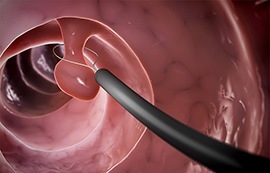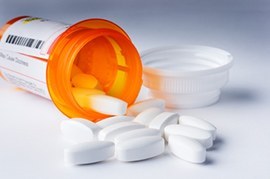Upper Gastrointestinal Diseases Treatment

Surgery
When non-invasive methods fail, surgery is recommended. Surgeries are performed on an outpatient basis under general anaesthesia. Surgeries can be performed through open or laparoscopic methods. While open surgery involves a large incision on the chest or abdominal wall (depending on the region of disease), laparoscopy involves minimally invasive techniques performed through tiny incisions through which a long tube with a camera and other surgical instruments are inserted.
Procedure
Laparoscopic Fundoplication
During the procedure, your surgeon wraps the upper part of the stomach, the fundus, around the lower oesophagus to create a valve, suturing it in place. It prevents stomach acid and food from flowing back into the oesophagus and is indicated for GORD and hiatal hernia. The incisions are closed and covered with small bandages.
Cancer resection
Cancers of the upper gastrointestinal tract may be treated with surgical removal of the cancer and a surrounding margin of healthy tissue. Some of the common surgeries involved are gastrectomy for stomach cancer and oesophagectomy for oesophageal cancer. The surgery aims at treating cancer by surgically removing the whole or part of the organ affected along with a margin of healthy tissue. Most often, affected adjoining tissues, organs and lymph nodes are also resected to ensure complete elimination of the cancer and to prevent spread to the rest of the body.
Hiatal hernia repair
In this procedure, the hiatal hernia, stomach bulging though the hiatus (hole in the diaphragm, which allows the oesophagus to open out into the stomach) is pushed back to its correct position and the opening of the hiatus narrowed.
Heller myotomy
Heller myotomy is a surgical procedure performed to open tight sphincter muscles by cutting the thick outer muscle from the oesophagus to the stomach. This is usually followed by a partial fundoplication to prevent reflux following the surgery. The surgery allows food to pass easily into the stomach. Thjis can be done as a laparoscopic operation or a POEM which is performed using a gastroscope through the mouth without any incisions.

Post–operative information
After surgery, you should keep the incision area clean and dry You may feel soreness around the incision areas. Your surgeon will prescribe pain medicine or non-steroidal anti-inflammatory drugs (NSAIDs) for the first few days to keep you comfortable. If the abdomen was distended with gas, you may experience discomfort in the abdomen, chest, or shoulder area for a couple of days while the excess gas is being absorbed. Contact your doctor immediately if you have a fever, vomiting, chills, increased pain, bleeding or fluid leakage from the incisions, chest pain, shortness of breath, leg pain or dizziness.
Benefits of this approach
Surgical management of upper gastrointestinal conditions can provide considerable relief from symptoms and improve your quality of life.
Preparation
Before upper gastrointestinal surgery, you will be given specific instructions as to your diet. You may be instructed not to eat or drink anything or to be on a liquid diet prior to the procedure. Your surgeon will also tell you what medications you can take and which ones to avoid.
Outcome
Most often, upper gastrointestinal surgery results in positive outcomes where you obtain complete relief from your symptoms. However, as with any surgery, they may involve certain risks and complications which include fever, infection, injury to adjacent nerves, blood vessels and organs, swallowing difficulties, gas embolism, adhesions (extensive scar tissue formation in the surgical area) and recurrence.
Post-op stages of recovery and care plan
After some of the procedures you will be given specific instructions with regard to your diet. You are recommended to start with soft food and slowly progress into your regular diet. You are advised not to lift heavy objects for up to 8-12 weeks after the surgery. Avoid driving for a few days after surgery. You are encouraged to start walking as early as possible to reduce the risks of blood clots and pneumonia. Your recovery after surgery will depend on the procedure and the care that you take in following your surgeon's care plan.

Down-time - lifestyle or off work duration
Most surgeries will allow you to resume your regular activities within a week after the procedure. However, complete recovery takes around two to three weeks.
Costs
Any costs involved will be discussed with you prior to your surgery.
Research
Extensive research is being done to find better treatment options for upper gastrointestinal diseases. Some of the recent studies are:
- Natural Orifice Transluminal Endoscopic Surgery and Upper Gastrointestinal Tract.J Gastric Cancer. 2013 Dec; 13(4): 199–206doi: 10.5230/jgc.2013.13.4.199;Published online 2013 Dec 31.1
- Novel treatment options for perforations of the upper gastrointestinal tract: Endoscopic vacuum therapy and over-the-scope clips. World J Gastroenterol. 2014 Jun 28; 20(24): 7767–7776doi: 10.3748/wjg.v20.i24.7767;Published online 2014 Jun 28. 2





